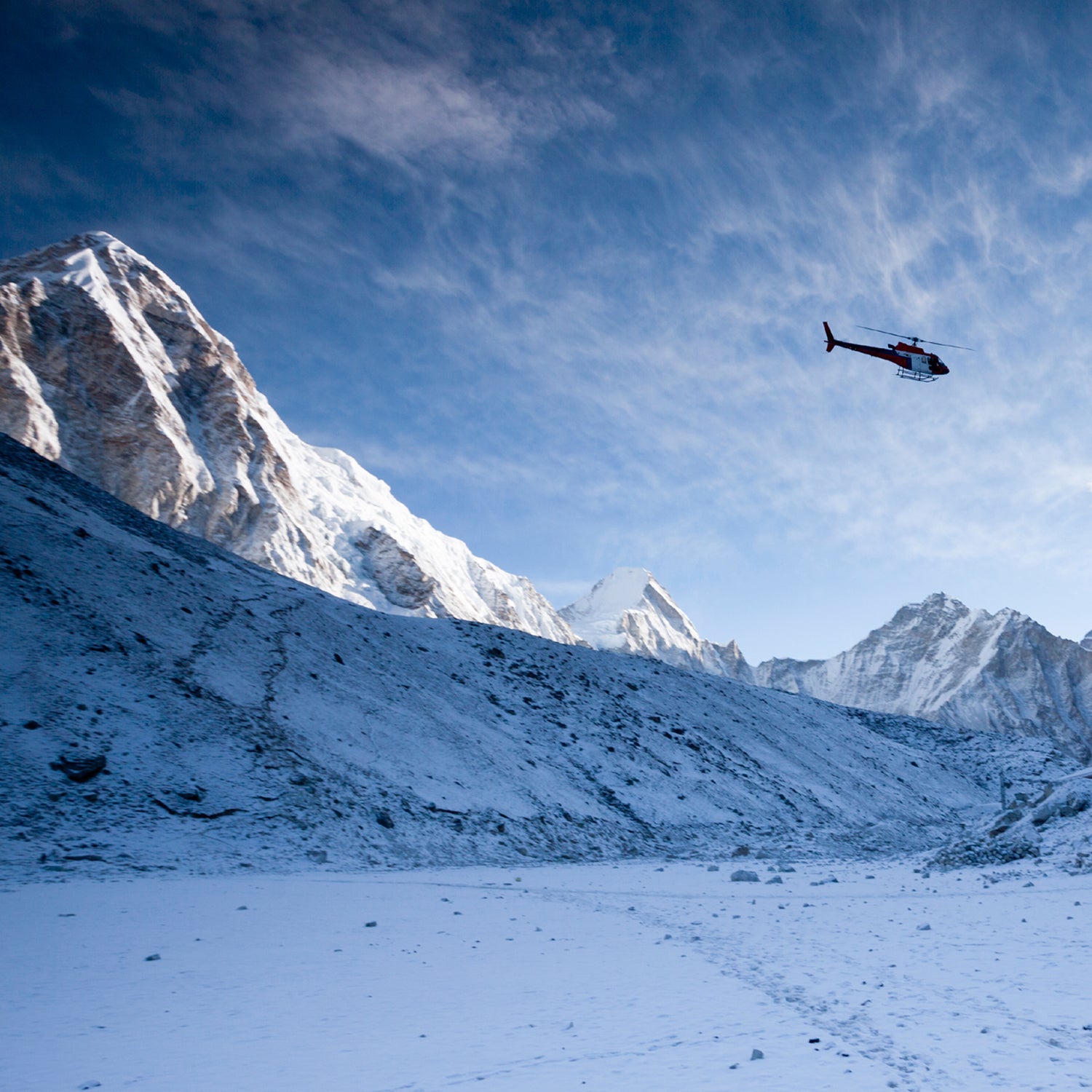On Friday, April 22, helicopters were used to transport gear from Everest Base Camp to Camp I for the first time in history. It was a move that many commercial operators have been urging the government to allow for the past three years in an effort to reduce the number of times that Sherpa workers have to pass through the Khumbu Icefall.
One helicopter pilot made six trips back and forth, a job that would have otherwise required 87 Sherpa loads through the South side’s most dangerous section—the Khumbu Icefall, the site of the 2014 avalanche that killed 16. The Icefall is perhaps the most lethal section of the mountain—and it is most deadly for the Sherpas who ferry gear up the mountain. Since 1963, 34 Sherpas and five Westerners have died there. The route through the always-shifting glacier field is reconstructed each year by the Icefall Doctors, a group of Sherpas employed by the government who this year. As veteran guide Peter Athans told ���ϳԹ��� last year, “There are no pros to these routes; they’re all cons. Some just have fewer cons than others.”
The Nepali government has been under pressure in recent years to improve working conditions for Sherpas on the mountain—including raising life insurance minimums. The approval of helicopter flights is widely seen as a way to to reduce the number of trips Sherpas have to make through the Icefall, even if their decision only applied to the ropes, hardware, and safety equipment used to fix the line from Camp II to the summit. (People and other equipment will still have to pass through on foot.)
“Using helicopters is more expensive than sending Sherpas,” says Garrett Madison, “but I think it’s the right thing to do.”
Climber and Everest blogger Alan Arnette, who will pass through the Icefall during his attempt on neighboring Lhotse this year, says the decision was almost universally supported at Base Camp. “[It’s] an opportunity for the Nepal government to show that they care about the safety of the Sherpas,” he says. Arnette also notes that 2016 “is proving to be a warm year and there is concern about going through the Icefall for serac release danger similar to what happened in 2014.”
The Icefall is dangerous enough that Lakpa Rita Sherpa, sirdar for Alpine Ascents International and 17-time Everest summiter, doesn’t climb the peak anymore in order to avoid the area. “The Sherpas are happy about this decision,” he says. “They are not losing [much] money because work between Base Camp and Camp I and II doesn’t pay much.” The common pay structure on Everest is based on number of loads carried, with different rates for covering the distance between each camp. While some may lose pay for the handful of passes they would have made with the route-fixing equipment, they will still earn bonuses for carrying clients’ gear through the Icefall.
“[Using helicopters] is more expensive than sending Sherpas,” says Garrett Madison, owner of Madison Mountaineering, “but I think it’s the right thing to do.” Aang Phurba, Madison’s sirdar, says that helicopters are a good idea as it’s faster and allows teams to start fixing the route above Camp II without having to carry all the loads up.
While it’s hard to argue with a move that can save lives, some mountaineers are against the idea on principle, citing betrayal of the true spirit of alpinism and a risk of helicopter crashes in the narrow Western Cwm. Helicopters have historically been used as a last resort used for critical rescues, and while the birds have become more advanced, it’s still dangerous to fly at such high elevations in low-density air. In 2010, a helicopter crashed during a rescue attempt of climbers stranded at 22,494 feet on Ama Dablam. The pilot and a paramedic on board were killed. There have been a handful of crashes at Everest Base Camp, including a 2003 crash that killed two, though helicopters carrying gear can at least choose to fly whenever there is a good weather window.
This year’s flights occurred without any problem and were paid for by the Expedition Operators Association (EAO), which counts most Everest commercial operators among its due-paying members. Though the EAO wouldn’t confirm how much they spent, such flights generally cost around $2,000. “Bottom line this is a good thing for everyone involved with Everest this year (32 teams, 278 permits issued on the Nepal side),” says Arnette. “Most people who understand the situation know that flying the summit ropes to Camp I does not take anything away from climbing Everest.”


